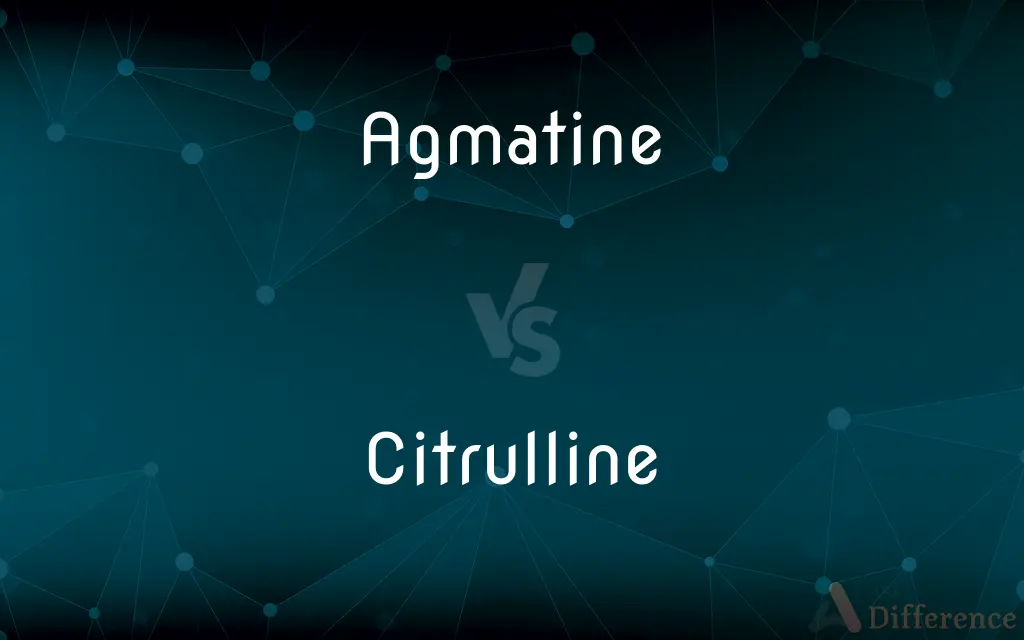Agmatine vs. Citrulline — What's the Difference?

Difference Between Agmatine and Citrulline
ADVERTISEMENT
Compare with Definitions
Agmatine
Agmatine, also known as (4-aminobutyl)guanidine, is an aminoguanidine that was discovered in 1910 by Albrecht Kossel. Agmatine is a chemical substance which is naturally created from the amino acid arginine.
Citrulline
The organic compound citrulline is an α-amino acid. Its name is derived from citrullus, the Latin word for watermelon.
Agmatine
(biochemistry) The amine (4-aminobutyl)guanidine which is a decarboxylation product of arginine and an intermediate in polyamine biosynthesis
Citrulline
An amino acid, C6H13N3O3, originally isolated from watermelon, that is produced as an intermediate in the conversion of ornithine to arginine during urea formation in the liver.
Citrulline
(amino acid) An amino acid, first isolated from watermelons, that is an intermediate in the urea cycle.
ADVERTISEMENT
Citrulline
An amino acid that is an intermediate in the conversion of ornithine to arginine.
Citrulline
An amino acid that does not occur in proteins but is an intermediate in the conversion of ornithine to arginine
Share Your Discovery

Previous Comparison
Marmot vs. Nutria
Next Comparison
Herewithin vs. Herewith













































